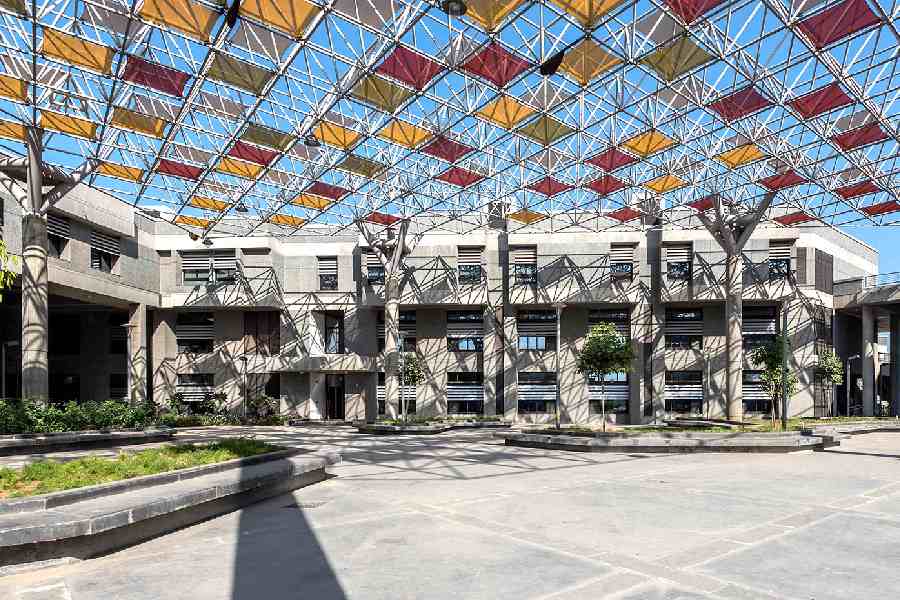 |
| (Top and below) The earthquake-resistant buildings in Rajgarhi in Uttarakhand |
 |
Dehra Dun, Sept. 21: People in one of India’s most earthquake-prone zones had mastered the art of building multi-level buildings resistant to seismic movement about a thousand years ago, an engineering study of the structures has revealed.
Researchers have found that ancient four-storey and five-storey buildings in Rajgarhi district of Uttarkashi in Uttarakhand reflect a distinct and elaborate style of architecture that allowed them to survive devastating quakes.
Scientists believe the Koti Banal architecture — named after a village in the district — relied on stone-filled solid platforms and judicious use of wood, which offered special advantages over other materials during earthquakes.
The designers appeared to have had “a fairly good idea about the forces likely to act upon the structures during an earthquake”, Piyoosh Rautela and Girish Chandra Joshi of Uttarakhand’s department of disaster mitigation and management said in a report.
The Koti Banal style attained its zenith about 900 years ago, they said in their report published in the journal Current Science. The Koti Banal buildings have survived the Kumaon earthquake of 1720 and the Garhwal earthquake of 1803, both of which had pulled down other houses in the region.
“This earthquake-safe architecture may have evolved after an earthquake that occurred around AD 1100, which was particularly devastating,” said A. Srivastava, a scientist at the Birbal Sahni Institute of Paleobotany, Lucknow.
The institute’s scientists performed radiocarbon dating studies on wood samples collected from panels used in the buildings and found that one Koti Banal structure was about 880 years old. Another building at Guna went back around 728 years.
 |
The solid platform at the base of the structures helped keep the centre of gravity and the centre of mass in close proximity to the ground, minimising the overturning effect that tall structures experience during severe seismic disturbances.
The use of wooden beams all through the height of the buildings and structural wood panels to sheath walls and floors were among other features that, engineers believed, had allowed the buildings to survive earthquakes for centuries.
Such wood-based structures flexed more than other material, absorbing and dissipating energy and reducing the risk of break-up and collapse. The Koti Banal design changed because the buildings were not comfortable enough for inhabitants, the engineers said.
A building in Guna provides an example of the change in style with higher roofs — thus becoming more comfortable to live in. But the ornate buildings that have survived some of the fiercest Himalayan earthquakes are now threatened by disuse, lack of maintenance and demolition.
Rautela and Joshi have warned that the structures were being torn down for the construction of new buildings.
“People are demolishing these old structures... to use the disassembled building material for construction of new and modern dwellings,” they warned in their report.
“Surviving specimens of Koti Banal architecture need to be protected as heritage buildings,” said Harish Mehta, a heritage worker in Dehra Dun. “This will allow future generations to get a glimpse of an architectural tradition.”










